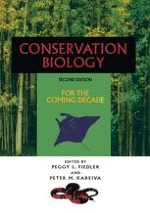1998 | OriginalPaper | Buchkapitel
Conservation Endocrinology: Field Endocrinology Meets Conservation Biology
verfasst von : Stephan J. Schoech, Joseph L. Lipar
Erschienen in: Conservation Biology
Verlag: Springer US
Enthalten in: Professional Book Archive
Aktivieren Sie unsere intelligente Suche, um passende Fachinhalte oder Patente zu finden.
Wählen Sie Textabschnitte aus um mit Künstlicher Intelligenz passenden Patente zu finden. powered by
Markieren Sie Textabschnitte, um KI-gestützt weitere passende Inhalte zu finden. powered by
Conservation biology as a scientific discipline is dominated by natural history and population biology. However, there are several challenges and questions in conservation biology that can be elegantly addressed with new techniques from endocrinology. The major change in endocrinology that makes this possible is the development of field techniques that allow us to probe an animal’s hormonal status while the animal ranges free in the wild (Wingfield and Farner 1976). Clearly hormones are as crucial an attribute to an animal as are its body size, general health, and reproductive rates. In fact, from one perspective, hormones might be the most fundamental measure of an animal’s likely success. After all, it is hormones that largely control reproduction and coordinate the physiological responses necessary for survival in a stressful environment. Thus, endocrinology offers us a window to better understand the factors impairing a species’ demographic vitality, and it may even offer us early-warning signals of a risk before survivorship or reproductive rates plummet. In this chapter we sketch the recent advances in endocrinology that have the greatest potential as tools in the service of conservation biology. Before turning to case studies that document the role that endocrinology can play in conservation, we briefly review some pertinent aspects of vertebrate endocrine systems.
